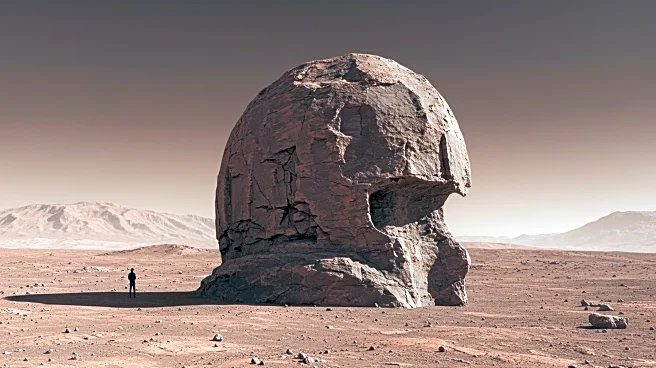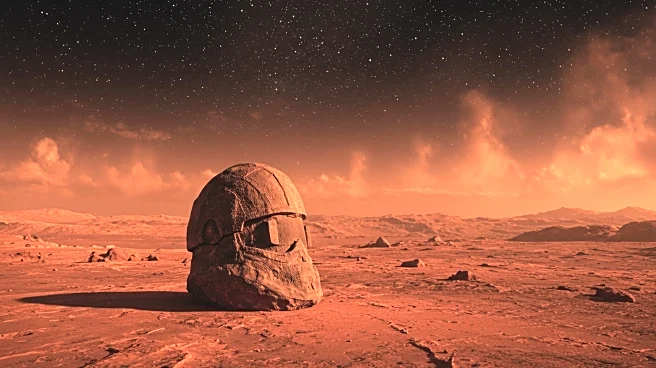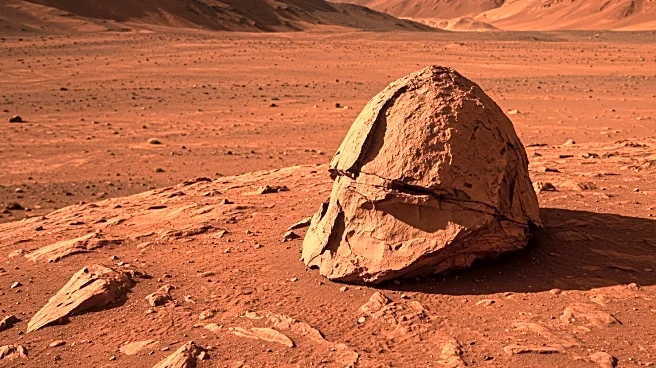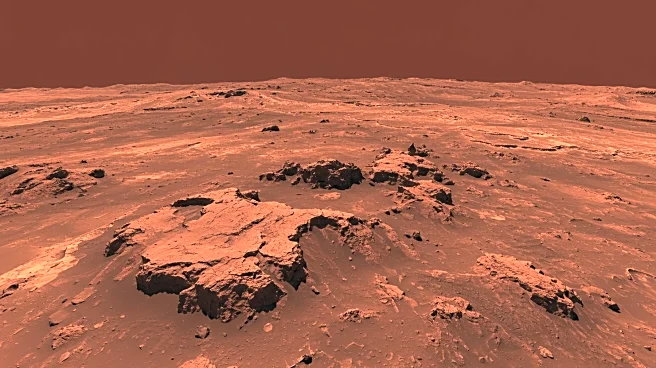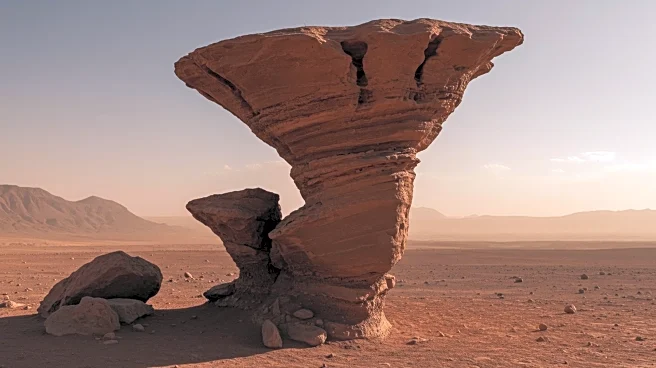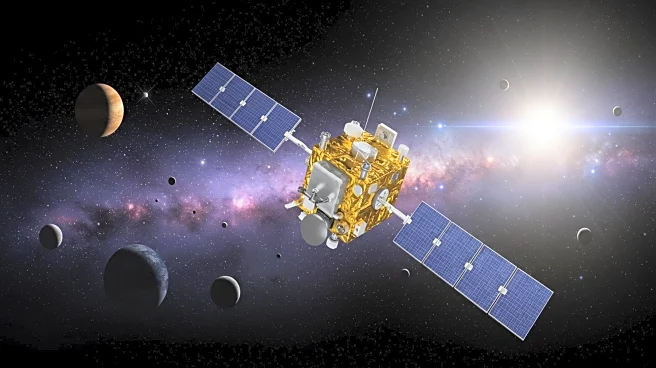What's Happening?
NASA's Perseverance rover has captured an intriguing image of a rock on Mars that resembles a centuries-old helmet. The photo, taken by the rover's Left Mastcam-Z camera on August 5, showcases a rock with a pointed peak and flared 'brim,' leading observers to liken it to a witch's hat or tent. The rock, named Horneflya, is notable for its spherule-covered texture, a formation that can occur through chemical weathering, mineral precipitation, or volcanic processes. This discovery adds to the rover's ongoing mission to explore the Jezero Crater and search for signs of ancient microbial life, contributing to the understanding of Mars' environmental history.
Why It's Important?
The discovery of the helmet-like rock by Perseverance is significant as it provides insights into the geological processes on Mars, potentially offering clues about the planet's past habitability. Understanding the formation and composition of such rocks can help scientists piece together Mars' environmental history, including periods when water may have existed on the planet's surface. This research is crucial for future missions, including NASA's Artemis program, which aims to pave the way for human exploration of Mars. The findings could also inform SpaceX's plans for uncrewed missions to Mars, highlighting the importance of continued exploration and study of the Red Planet.
What's Next?
Perseverance will continue its mission in the Jezero Crater, focusing on studying the 'wet history' of Mars. The rover's findings may lead to further discoveries about potential ancient microbial life and the planet's habitability. As NASA progresses with its Artemis program, the insights gained from Perseverance's research will be instrumental in preparing for human exploration of Mars. Additionally, SpaceX's plans for uncrewed missions to Mars could benefit from the data collected by Perseverance, potentially accelerating the timeline for human presence on the Red Planet.
Beyond the Headlines
The discovery of the helmet-like rock on Mars raises questions about the ethical and scientific implications of exploring and potentially colonizing another planet. As space exploration advances, considerations about the preservation of extraterrestrial environments and the impact of human activities on these landscapes become increasingly important. The findings also contribute to the broader cultural fascination with Mars, inspiring public interest and support for space missions. Long-term, the exploration of Mars could lead to shifts in international space policy and collaboration, as nations work together to unlock the mysteries of the universe.



